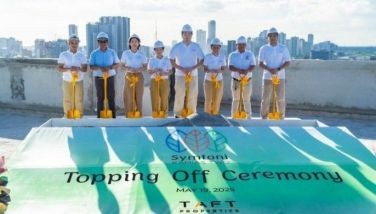Martial law and the communists

This book is highly controversial when it narrates certain debatable conclusions as facts. It is a very readable book that in certain parts reads almost like a novel. I would not recommend this book as a reading reference to those who have not read any other book on this period in Philippine history. But for those relatively widely read and are able to make their own conclusions, this is a highly recommended book.
The book is “The Drama of Dictatorship: Martial Law and the Communist Parties of the Philippines” by Joseph Scalice (Ateneo de Manila University Press, 2023).
In the Introduction, there are controversial conclusions written by the author as if they were undisputed facts which, of course, will be challenged by other parties. For example, he said: “The rival sections of the ruling class and their leading political representatives agreed on the need for authoritarian rule but they could not feasibly select the permanent occupant of the presidential palace of Malacañang.”
In another statement in the Introduction, the author wrote: “The Moscow-oriented PKP (Partido Komunista ng Pilipinas) terrorized Manila with bombings, secretly coordinated with Marcos’ military to justify the imposition of dictatorship. The Beijing-aligned CPP (Communist Party of the Philippines) worked with forces tied to the CIA in an attempt to install a rival faction of the capitalist class – similarly bent on dictatorship by coup d’etat. The central pretext for martial law, cited by both Washington and Marcos, was the danger of communism and yet, martial law was imposed with the support of a Communist Party and the backing of the Soviet Union. How does one untangle this snarl of contradictions?”
The book is divided into five parts and an Epilogue. It begins in the 1950s, which sets the background for the events that follow. The second, third and fourth chapters talk of the First Quarter Storm (FQS), the students’ and labor demonstrations and the suspension of the writ of habeas corpus. The fifth chapter is about the declaration of martial law.
In the first chapter, the focus is on the ruling class. He writes that there were five ruling class factions which came into alignment with each other in their opposition to Marcos between 1970 and 1972: Aquino, Laurel, Osmeña, Roxas and Lopez. He writes: “Each name represented a dynasty of the landed elite. The leading collaborators during the Japanese Occupation, they had been immediately rehabilitated by Washington in the wake of the war and were now the most politically powerful families in the country.”
Scalice saw the power struggle within the oligarchy between the ancien and the nouveau. This should be remembered as one reads the rest of the book because Marcos was identified as part of the nouveau and the principal opposition as part of the ancien. The book also traces the beginnings of the two communist parties, the CPP and the PKP. He describes Jose Ma. Sison as someone who “sought to achieve Rectonian nationalism through the barrel of a gun.”
The book discusses lengthily the conflict between Marcos and the Lopez family. The author devotes some pages to describing some extrajudicial plots to unseat Marcos. For example, he writes: “Aquino, working with his allies, Jose Diokno and Raul Manglapus, attempted to organize a military coup to overthrow the president and the CPP was involved in this as well.” I am sure that this will be challenged by other historians.
The story of the FQS takes up a whole chapter. The roots of many organizations can be traced to the 45 member-organizations that comprised the Movement for a Democratic Philippines (MDP), which was the core leadership of the FQS. It had a secretariat led by Julius Fortuna and a majority were members of the Kabataang Makabayan and Samahan ng Demokratikong Pilipino. Fortuna was a member of the CPP. MPKP and other organizations aligned with the PKP were removed from the MDP. This was the start of the struggle between the CPP and the PKP.
Certainly, one of the most controversial accounts is that Eugenio Lopez Jr. and ABS-CBN were actively aiding the student demonstrators by providing airtime and even facilities.
In the third chapter called “Barricades,” the focus was on student demonstrations. I found two stories especially interesting. The first one was when the UP students took over the campus and named it the Diliman Commune. The student activists were able to physically control the access to the campus. However, the following year, in the UP student elections, the activists lost control and a non-activist group led by Manny Ortega won the presidency and the majority of the seats in the Student Council.
The last chapter is on martial law. One story that may not be known is the author’s claim that in the first weeks of May 1992, Ferdinand Marcos and the Lopez brothers made peace. Scalice wrote: “To carry out his ends, split the opposition and make the final preparations for martial law, Marcos had to make the reconciliation with the Lopez brothers look like a defeat. He humbly petitioned them to resolve the dispute in April, offering generous terms.”
According to Scalice, Benjamin Romualdez, brother of Imelda Marcos, drove Marcos to Eugenio Lopez’s house where they concluded the negotiations. He continues: “The Lopez brothers immediately altered the oppositional stance of the Chronicle and ABS-CBN. And thus in the final months before dictatorship, the nation’s largest television and radio broadcast network adopted an editorial policy conciliatory to Marcos.”
In the Epilogue, Scalice concludes: “Democratic rights can only be viably defended by a movement that is dedicated to curing the social cancers that have eaten away at their foundations.”
* * *
Email: elfrencruz@gmail.com
- Latest
- Trending


























